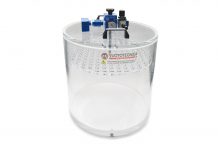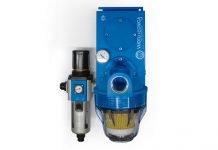In the modern building scene, the use of wood in prefabricated buildings is one of the most popular solutions for those who wish to combine aesthetics, sustainability and strength.
However, to ensure the longevity of the wood used in these structures, it is necessary to adopt specific treatments that preserve its properties. One of the most effective techniques in this area is the use of vacuum generation, which allows the performance of wood to be significantly improved.
How vacuum improves wood treatment
The vacuum treatment process allows moisture and gases trapped in wood pores to be removed. This step is critical in increasing the material’s resistance to weathering and biological agents such as fungi, insects and bacteria.
Through the application of vacuum, wood becomes more durable and able to maintain its properties intact over time, even in outdoor environments subject to harsh weather conditions.
Vacuum impregnation: a tailor-made treatment
Another advantage of using vacuum in wood treatment is the possibility of applying specific impregnants, selected according to the type of wood species and risk class.
The impregnation process takes place in a hermetically sealed autoclave, where the vacuum allows uniform and deep penetration of the protective treatment. This approach optimizes the protection of the wood without altering its aesthetic characteristics, such as color or natural texture.
In line with the requirements of eco-sustainable building, many vacuum treatments use water-based impregnants, ensuring a low environmental impact. The entire process takes place in a controlled, sealed environment, minimizing the emission of harmful substances into the atmosphere. This makes vacuum technology an ideal solution for those who wish to reduce their ecological impact without compromising the quality of materials.
In addition to improving weathering and biological resistance, vacuum technology also allows for the application of fire retardant treatments. This possibility is especially important for residential and commercial structures, where fire protection is a crucial factor. With this treatment, wood becomes an even safer and more versatile material for modern construction.
In a context where sustainability is increasingly at the center of construction choices, wood treatment with vacuum technology is an innovative and environmentally friendly solution. Prefabricated houses and structures made of vacuum-treated wood not only ensure a long service life, but also help reduce the overall environmental impact of construction.
The future of construction is sustainable, and vacuum is one of the technologies that helps us achieve it.









































